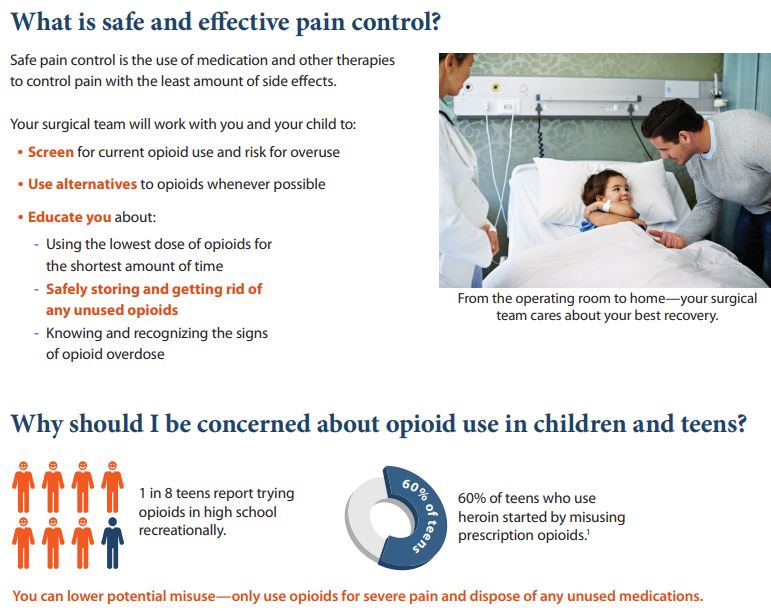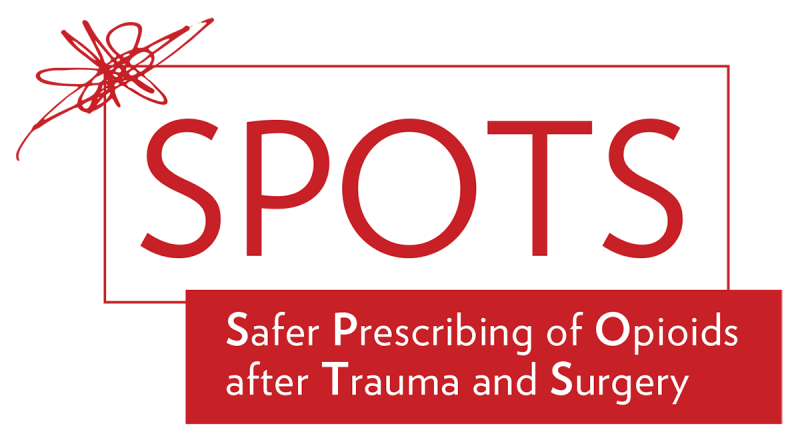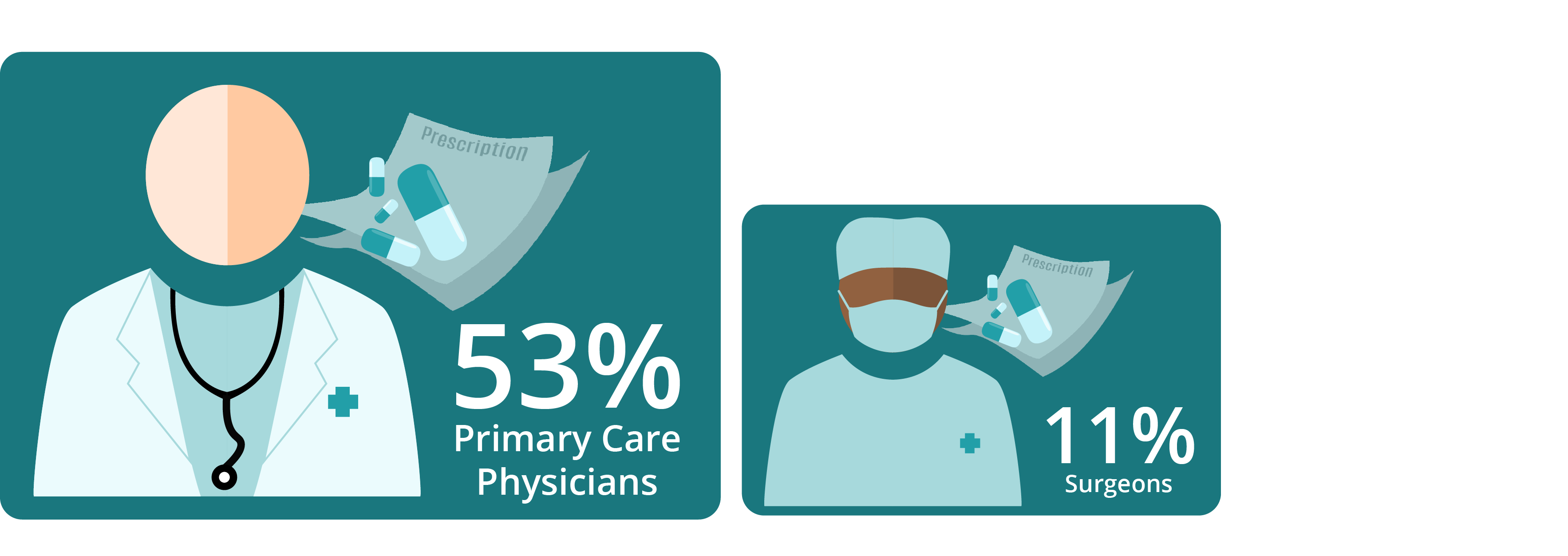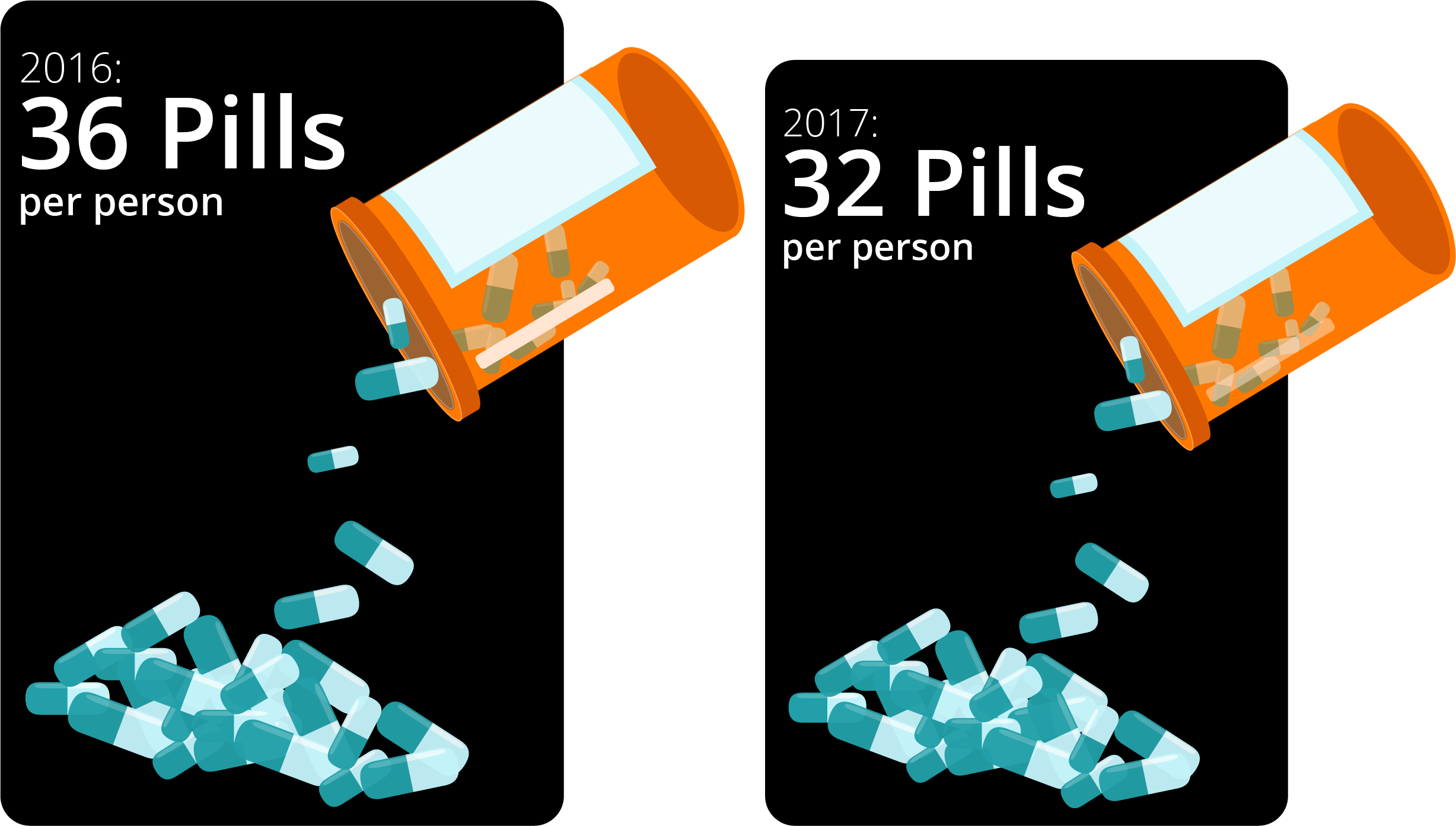PRACTITIONERS
Do you prescribe opioid pain medications? Scroll down for easy-to-read summaries of the latest literature, prescribing practices, patient education materials, and other information specifically tailored to medical professionals.
Best Practices
What do we know about how much opioid pain medication most people need after a given operation or injury?
Alternatives
What are the best alternatives to opioids? What is the best way to control pain after surgery or injury?
Disposal
What is the safest way for patients to dispose of unused opioids? How can you help educate your patients?

Safe and Effective Pain Control After Surgery for Children and Teens
The American College of Surgeons released an educational brochure designed to help guide discussions around perioperative pain control, goals of pain therapy, non-opioid pain management options, and safe storage and disposal of opioids. This brochure includes a section where you can lay out a pain management plan with your patient’s family. There is also a reference to a DEA website where families can locate drop-off locations to securely dispose of unused opioids.

Safer Prescribing of Opioids after Trauma and Surgery
SPOTS offers an opportunity for collaborative learning with experts about best practices in opioid prescribing, and with other providers around the state about the current challenges and opportunities in treating our injured patients’ pain. Prescribed pain medication after surgery and traumatic injury is among the most common first exposures to opioids.

The majority of opioid prescriptions were provided by primary care physicians, followed by surgeons (9-12 months after surgery).
Reference: https://www.ncbi.nlm.nih.gov/pubmed/29948809

In 2017, there were enough opioids prescribed to supply every person in the US with 32 pills, only a slight decrease from the 36 pill rate reported in 2016.
Reference: https://www.planagainstpain.com/wp-content/uploads/2019/11/Pacira_2018report_102419b_FINAL.pdf
